
World Travel Tips
What Should You Do in Japan?
Japan is a country where ancient traditions harmoniously coexist with cutting-edge modernity, making it one of the most fascinating destinations for travelers worldwide. From its iconic temples and shrines to its bustling cities and serene natural landscapes, there’s something for everyone. Whether you’re a history buff, nature enthusiast, or culture seeker, Japan offers a wealth of attractions that promise unforgettable experiences. Here are ten must-visit destinations that showcase the diverse beauty and rich history of this island nation, each offering its own unique charm and allure.
1. Mount Fuji
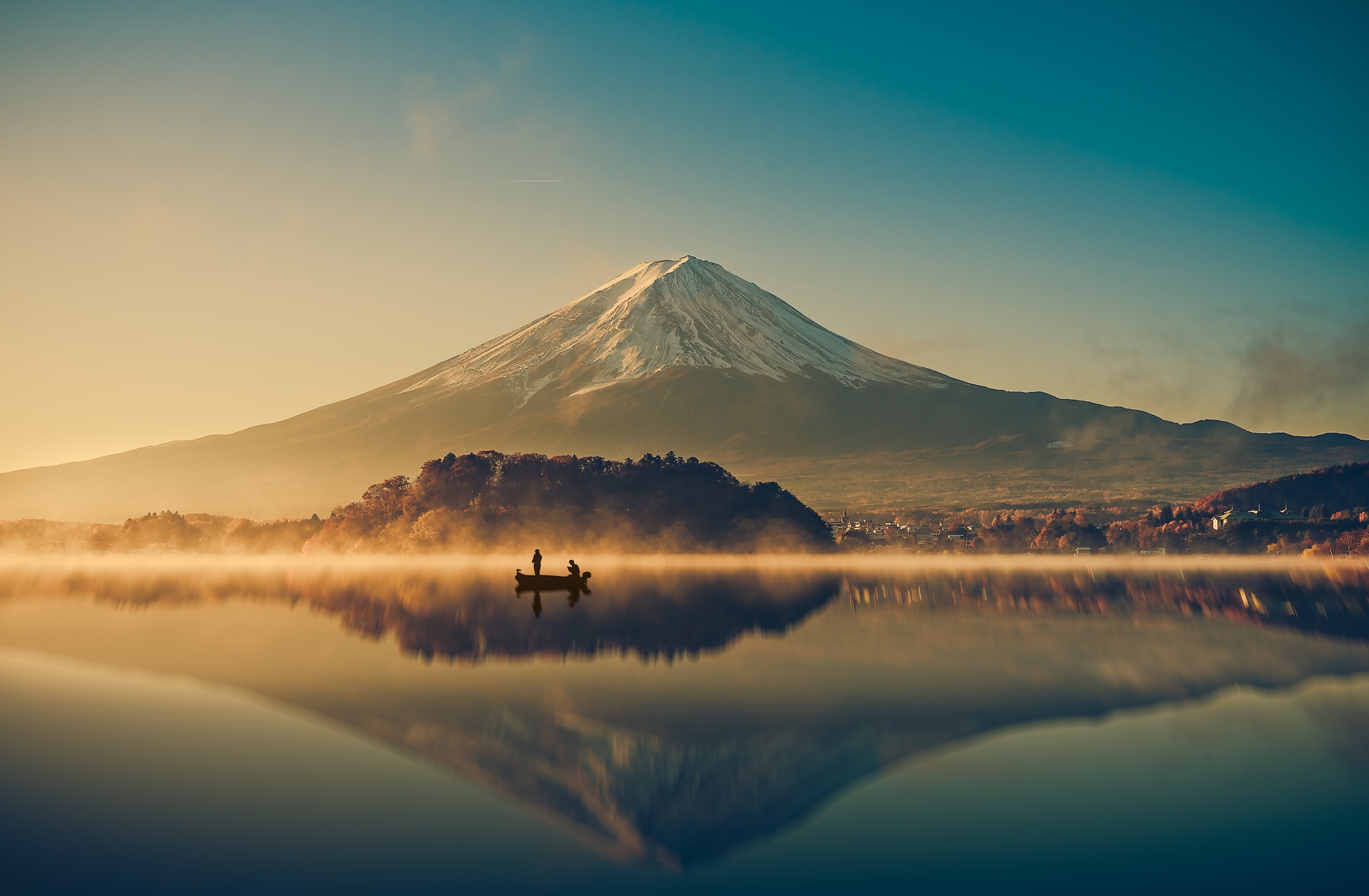
Located in the Kanto region, near Tokyo, Mount Fuji is Japan’s tallest and most iconic peak, standing at 3,776 meters (12,389 feet). Known for its perfectly symmetrical cone shape, it is a UNESCO World Heritage Site and a popular destination for climbers, photographers, and nature lovers. Visitors can hike to the summit during the climbing season, or enjoy its majestic views from surrounding areas like Lake Kawaguchi or the Fuji Five Lakes.
Why visit?
Mount Fuji is a symbol of Japan’s natural beauty and spiritual significance. Whether you’re an avid hiker or simply want to enjoy stunning views, this majestic mountain offers a memorable experience for all. Its cultural importance and breathtaking scenery make it an unmissable destination.
2. Fushimi Inari Taisha
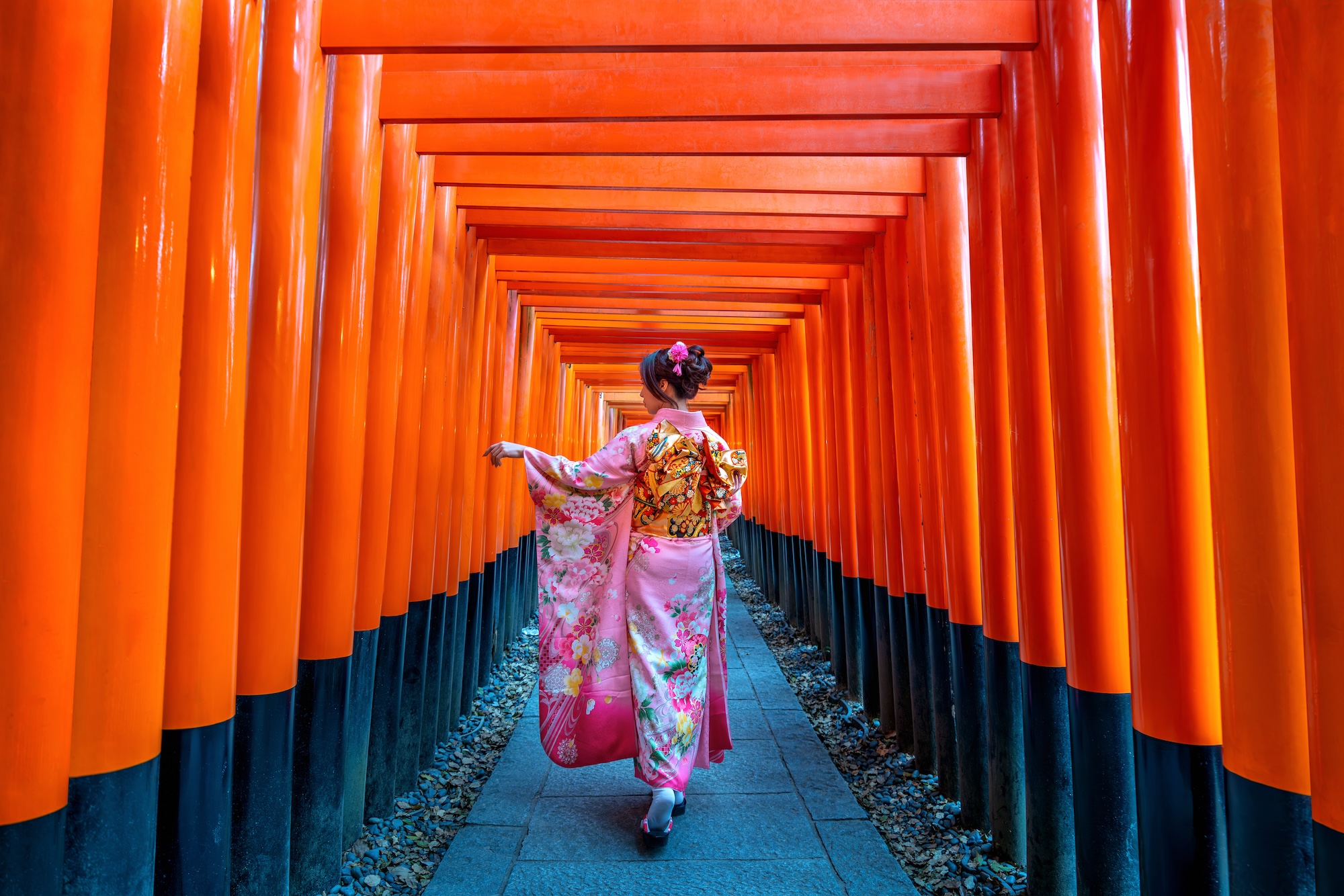
Located in Kyoto, Fushimi Inari Taisha is one of Japan’s most famous Shinto shrines. Its path is lined with thousands of red torii gates, which lead up to the shrine at the top of Mount Inari. The gates are dedicated to Inari, the Shinto god of rice, and walking through them provides a surreal experience.
Why visit?
The sight of thousands of vibrant torii gates creates a unique and peaceful atmosphere, perfect for those interested in Japanese culture, spirituality, and photography. Hiking through the gates to the shrine offers both a physical and spiritual journey.
3. The Great Buddha of Nara (Todai-ji Temple)
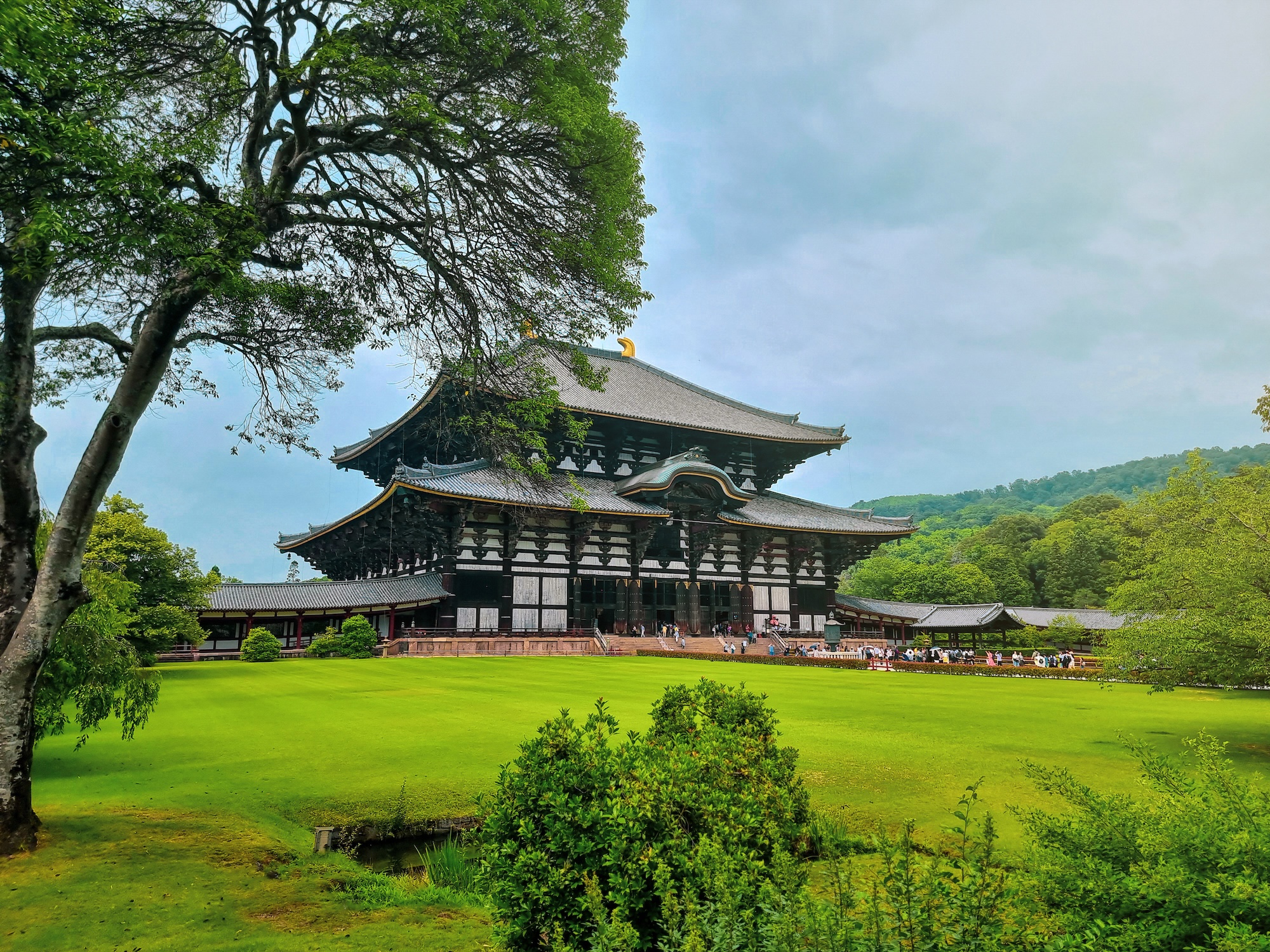
In Nara, Todai-ji Temple is home to the Great Buddha (Daibutsu), a colossal bronze statue of Buddha that stands at 15 meters (49 feet) tall. The temple itself is one of Japan’s largest wooden buildings and offers visitors a glimpse into the country’s rich history and religious traditions.
Why visit?
The sheer size and beauty of the Great Buddha are awe-inspiring, and the serene atmosphere of the temple complex offers a peaceful retreat. It’s a must-see for anyone interested in Japan’s cultural and religious heritage.
4. Tokyo Disneyland & DisneySea
Located in Urayasu, Chiba, just outside of Tokyo, Tokyo Disneyland & DisneySea is one of the most popular theme parks in Japan. The park is divided into two sections: Tokyo Disneyland, a traditional Disney park with classic rides, and DisneySea, a one-of-a-kind park that blends nautical themes with Disney stories.
Why visit?
For Disney fans and families, Tokyo Disneyland & DisneySea is a magical experience that combines world-class entertainment, unique attractions, and the charm of Japanese hospitality. It’s an experience that’s both familiar and distinctly Japanese.
5. Himeji Castle
Located in Himeji City, Himeji Castle is often considered Japan’s most beautiful and best-preserved feudal-era castle. Known as the “White Heron Castle” due to its white, elegant design, it is a UNESCO World Heritage Site and an important cultural landmark.
Why visit?
Himeji Castle offers a glimpse into Japan’s samurai past, with its impressive architecture, intricate defenses, and rich history. It’s an essential visit for history enthusiasts, photographers, and anyone interested in Japanese castles.
6. The Imperial Palace
In the heart of Tokyo, the Imperial Palace is the official residence of Japan’s Emperor. The palace grounds feature beautiful gardens, historic buildings, and traditional Japanese landscaping. Although the palace itself is not open to the public, the East Gardens offer a peaceful escape.
Why visit?
The Imperial Palace provides an opportunity to explore a piece of Japan’s royal history and enjoy the tranquil beauty of its gardens. The palace’s central location in Tokyo also makes it an easy addition to a day of sightseeing.
7. Okinawa Churaumi Aquarium
Located in Okinawa, Churaumi Aquarium is one of the largest and most renowned aquariums in the world. It’s famous for its massive Kuroshio Sea tank, which houses whale sharks, manta rays, and other sea creatures. The aquarium also showcases Okinawa’s rich marine life.
Why visit?
For animal lovers and marine enthusiasts, the Okinawa Churaumi Aquarium is an unforgettable experience. The chance to see such massive and rare sea creatures up close is both educational and awe-inspiring. It’s perfect for families, couples, or anyone looking to experience Japan’s stunning marine life.
8. Akihabara
Located in central Tokyo, Akihabara is a vibrant district known as the mecca for electronics, anime, manga, and pop culture. With numerous shops selling gadgets, games, and collectibles, it’s a hub for both tech enthusiasts and anime fans.
Why visit?
If you’re a fan of Japanese pop culture or technology, Akihabara is a must-see. The district’s electric energy, combined with its unique shopping opportunities, makes it a one-of-a-kind experience. You’ll also find maid cafes and themed attractions that make this district truly unique.
9. Kinkaku-ji (Golden Pavilion)
Situated in Kyoto, Kinkaku-ji is one of Japan’s most iconic temples, known for its stunning golden exterior. The temple, officially named Rokuon-ji, is surrounded by beautiful gardens and a serene pond, creating a picturesque setting.
Why visit?
The shimmering gold of Kinkaku-ji against the backdrop of lush greenery and reflective waters makes for a breathtaking sight. It’s an iconic piece of Japan’s architectural and spiritual heritage, offering a peaceful retreat in the heart of Kyoto.
10. Nara Park
Located in Nara, Nara Park is home to over 1,000 free-roaming deer, which are considered sacred in the Shinto religion. The park is also home to several historical sites, including Todai-ji Temple and Kasuga Taisha Shrine.
Why visit?
Nara Park offers a unique experience where visitors can interact with the friendly deer while enjoying scenic views and ancient temples. It’s a tranquil escape where nature and history seamlessly blend, perfect for a leisurely stroll.
Seasonal Recommendations
? Spring (March-May): Spring is the most popular time to visit Japan, and for good reason—cherry blossoms (sakura) bloom across the country, creating breathtaking scenes from parks to temple grounds. Temperatures are mild, ranging from 10°C to 20°C (50°F to 68°F), and the air is fresh and crisp, perfect for long days of sightseeing. Kyoto’s Fushimi Inari Taisha and Kinkaku-ji (Golden Pavilion) are especially picturesque during this season, framed by pink petals. Cultural festivals, traditional gardens in full bloom, and clear views of Mount Fuji make spring a dream for photographers and first-time visitors alike.
☀️ Summer (June-August): Japan’s summer is hot, humid, and packed with high-energy experiences. Temperatures typically range from 25°C to 35°C (77°F to 95°F), especially in cities like Tokyo and Osaka. While June sees a rainy season, July and August burst into life with vibrant matsuri (festivals), fireworks, and lively outdoor celebrations. It’s the only time of year to climb Mount Fuji—an unforgettable adventure. Families often flock to Tokyo Disneyland & DisneySea for summer fun, and the beaches of Okinawa offer a tropical break from the mainland heat. Just be sure to stay hydrated and take breaks in shaded or air-conditioned spots.
? Autumn (September-November): Autumn in Japan is peaceful, colorful, and a favorite for travelers seeking beautiful scenery without the heavy crowds of spring. Temperatures cool to a comfortable range of 12°C to 24°C (54°F to 75°F), and vivid fall foliage paints the temples, mountains, and countryside in rich reds and golds. It’s a great time for leisurely strolls through historic sites like Nara Park or Himeji Castle, where the leaves provide a dramatic backdrop. Seasonal foods like roasted sweet potatoes and warm soba make this season especially cozy for food lovers.
❄️ Winter (December-February): Winter is the quietest season for tourism in much of Japan, though it’s an underrated time to visit. Temperatures range from 0°C to 10°C (32°F to 50°F) depending on the region, with snow falling in many parts of the country, especially in the north. Cities like Tokyo remain relatively mild, with crisp air and festive illuminations lighting up shopping streets. It’s a peaceful time to explore sites like the Imperial Palace or the futuristic streets of Akihabara without the crowds. And if you’re up for a warm escape, the Okinawa Churaumi Aquarium offers a subtropical contrast to the winter chill.
Tips for Your Visit
1. Getting Around
- Use the Japan Rail Pass: For tourists traveling across multiple cities, the Japan Rail Pass offers unlimited travel on most JR trains, making it a convenient and cost-effective option.
- Subway Systems: Japan’s subway systems, especially in cities like Tokyo and Osaka, are easy to navigate with English signage. Purchase a day pass or rechargeable IC card for smooth travel.
- Bicycles: Many cities have bike rental programs, allowing you to explore at your own pace. Japan is a very bike-friendly country, with dedicated bike lanes in many urban areas.
2. Local Cuisine
- Sushi and Ramen: Don’t miss these iconic Japanese dishes. Whether at a conveyor-belt sushi restaurant or a ramen shop, the quality and flavor are unbeatable.
- Try Local Specialties: Explore regional delicacies like Osaka’s takoyaki (octopus balls) and Kyoto’s kaiseki (multi-course meal) for a true taste of Japan’s diverse food culture.
- Etiquette: When dining, be sure to follow basic etiquette such as not sticking chopsticks upright into rice and avoiding speaking with your mouth full.
3. Language
- Learn Basic Phrases: While many people in Japan speak some English, learning a few Japanese phrases like “Arigatou” (Thank you) and “Sumimasen” (Excuse me) can go a long way in enhancing your experience.
- Translation Apps: In case you need extra help, download a translation app like Google Translate to assist with communication, especially in rural areas where English is less common.
- Non-verbal Communication: Japanese people often rely on body language, so be mindful of your gestures and facial expressions as they can help convey your message.
4. Safety
- Japan is Extremely Safe: Japan boasts low crime rates, but it’s always wise to stay aware of your surroundings, especially in busy tourist spots.
- Respect Local Customs: When visiting temples or shrines, be respectful of the sacred environment. Avoid speaking loudly, and remember to remove your shoes when entering certain areas.
- Health and Safety: In case of emergencies, Japan has excellent healthcare services, and English-speaking staff can be found in most hospitals and clinics. Always carry a copy of your passport in case of identity checks.
The 3 Most Popular Cities
Japan is a country that beautifully blends the old and the new, where futuristic cities coexist with ancient traditions. From the bustling capital of Tokyo to the historic beauty of Kyoto and the vibrant atmosphere of Osaka, Japan’s cities offer a mix of cultural heritage, modern attractions, and unforgettable experiences. These cities stand out as the top destinations for tourists looking to explore Japan’s rich history, innovative technology, and culinary delights.
1. Tokyo
Why It’s Popular:
Tokyo is Japan’s capital and one of the world’s most exciting cities. It offers a unique blend of ultra-modern skyscrapers, neon lights, and ancient shrines, making it a must-visit for those seeking a fast-paced, diverse urban experience. Whether you’re shopping in Shibuya, exploring historical temples in Asakusa, or enjoying the latest in tech, Tokyo has something for everyone.
Must-See Attractions:
- Shibuya Crossing
- Meiji Shrine
- Tokyo Tower
- Senso-ji Temple
- Odaiba (a futuristic entertainment district)
What to Do:
Wander through bustling shopping districts, visit traditional shrines and gardens, experience vibrant nightlife, and sample Tokyo’s famous sushi, ramen, and street food.
2. Kyoto
Why It’s Popular:
Kyoto is Japan’s cultural heart and the city that best preserves the country’s traditions and history. Once the capital of Japan, Kyoto is famous for its temples, traditional tea houses, and stunning gardens. It offers a serene atmosphere with a glimpse into Japan’s ancient past, making it the perfect destination for those interested in culture, spirituality, and natural beauty.
Must-See Attractions:
- Fushimi Inari Taisha
- Kinkaku-ji (Golden Pavilion)
- Arashiyama Bamboo Grove
- Nijo Castle
- Gion District (famous for its geishas)
What to Do:
Stroll through beautiful gardens, visit sacred temples, enjoy a traditional tea ceremony, and explore the charming old districts of Gion and Higashiyama.
3. Osaka
Why It’s Popular:
Osaka is known for its vibrant street life, modern architecture, and rich culinary scene. As Japan’s third-largest city, it’s an exciting blend of fun and flavor, with shopping, entertainment, and unique local cuisine like takoyaki (octopus balls) and okonomiyaki (savory pancakes). Osaka’s welcoming atmosphere and lively energy make it a favorite for tourists looking to immerse themselves in Japan’s pop culture and food scene.
Must-See Attractions:
- Osaka Castle
- Universal Studios Japan
- Dotonbori District (famous for neon lights and street food)
- Umeda Sky Building
- Tsutenkaku Tower
What to Do:
Indulge in Osaka’s famous street food, explore the lively entertainment districts, visit historical landmarks, and enjoy the bustling shopping streets of Namba and Shinsaibashi.
8 Tips for Dining in Japan
Japan’s food culture is as rich and varied as its history, offering everything from delicate sushi and savory ramen to intricate kaiseki meals and hearty street food. Dining in Japan is not only about flavor but also about respecting tradition and etiquette. Whether you’re a first-time visitor or a seasoned traveler, understanding the nuances of Japanese dining will make your experience even more enjoyable. Here’s your guide to navigating the food scene in Japan with confidence!
1. Follow the Etiquette for Using Chopsticks
Chopsticks are an essential part of Japanese dining, but there are some important dos and don’ts to be aware of. For instance, avoid sticking your chopsticks upright into a bowl of rice as it resembles a funeral ritual. When you’re not using them, always place your chopsticks horizontally on a rest, not directly on the table.
Tip: If you’re unsure about how to use chopsticks, don’t worry! Most Japanese people are understanding and appreciative when you try, so take your time and enjoy the experience.
2. Respect the Ritual of Slurping Noodles
In Japan, slurping noodles is more than just acceptable—it’s expected! It shows appreciation for the food and is believed to enhance the flavor. So, whether you’re enjoying a bowl of ramen or soba, don’t hold back.
Tip: Slurping your noodles is part of the fun and shows you’re enjoying your meal. Embrace it, and don’t worry about making noise!
3. Be Mindful of the Dining Environment
In many traditional Japanese restaurants, especially those with tatami mats, you’ll be asked to remove your shoes before entering. In some cases, there may be designated indoor shoes to wear, but it’s always a good idea to bring clean socks just in case.
Tip: Always check for signs or ask if you need to remove your shoes. It’s an important part of Japanese culture, and it shows respect for the space.
4. Tipping is Not Common in Japan
Unlike many other countries, tipping is not a custom in Japan and can even be considered disrespectful. Service charges are usually included in the meal price, and exceptional service is simply expected. Instead, show your appreciation through polite words and behavior.
Tip: Don’t worry about leaving tips. A sincere “Arigatou gozaimasu” (Thank you) is the best way to show gratitude for good service.
5. Experience Kaiseki Dining
Kaiseki is a traditional multi-course meal that highlights seasonal ingredients and artistic presentation. It’s a refined dining experience that involves several small, carefully prepared dishes. Each course is meant to delight all of your senses, so take your time and savor each bite.
Tip: If you have the chance to try kaiseki, don’t rush through it. Appreciate the balance of flavors, textures, and presentation in each course.
6. Enjoy Seasonal and Local Specialties
Japanese cuisine is deeply influenced by seasonality, so be sure to try dishes that are unique to the time of year or the region you’re visiting. From fresh sashimi in summer to hearty hot pots in winter, each season brings a new wave of culinary delights.
Tip: Don’t hesitate to ask locals or your waiter about seasonal specialties. You may discover a dish that’s only available for a limited time.
7. Understand the Importance of Rice
Rice is the staple food in Japan, and it’s often served with most meals. However, don’t waste it. Leaving rice behind can be seen as disrespectful, as it’s viewed as wasteful and a sign of not appreciating the meal.
Tip: Always try to finish your rice. If you’re full, it’s okay to leave a small amount, but try not to leave a large portion behind.
8. Know What to Expect at a Sushi Bar
Sushi bars are a popular dining choice in Japan, and there are some specific customs to follow. For example, when dipping sushi into soy sauce, dip only the fish side, not the rice side, to avoid it falling apart. It’s also customary to eat sushi in one bite for a more authentic experience.
Tip: Don’t mix wasabi directly into your soy sauce. The chef will often add just the right amount of wasabi to the sushi, so leave it as is.
Conclusion
Dining in Japan is a delightful and immersive experience that goes beyond just enjoying delicious food. By following these tips, you’ll not only have a smoother dining experience but also gain a deeper appreciation for Japan’s rich culinary traditions. From respecting local customs to savoring seasonal dishes, there’s a whole world of food waiting for you to explore. So take your time, enjoy each meal, and dive into the unique flavors and experiences that Japan has to offer!
Share This Guide
Looking for another location? Search below!
Articles About Japan:
Learn Even More
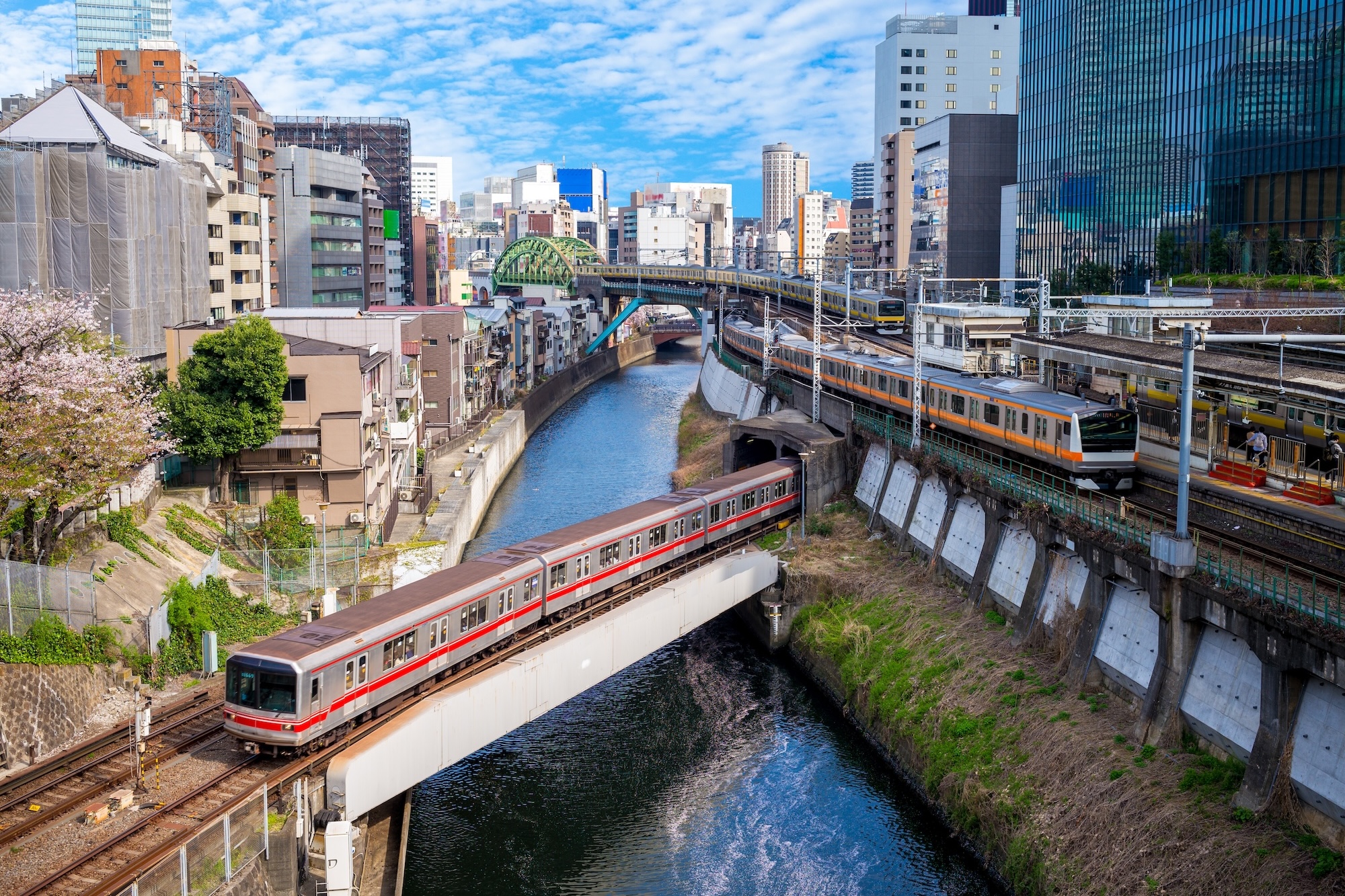
7 Essential Tips for Mastering the Tokyo Subway System
February 7, 2025
5 min
Tokyo’s subway system is one of the most efficient, convenient, and well-connected transit networks in the world.
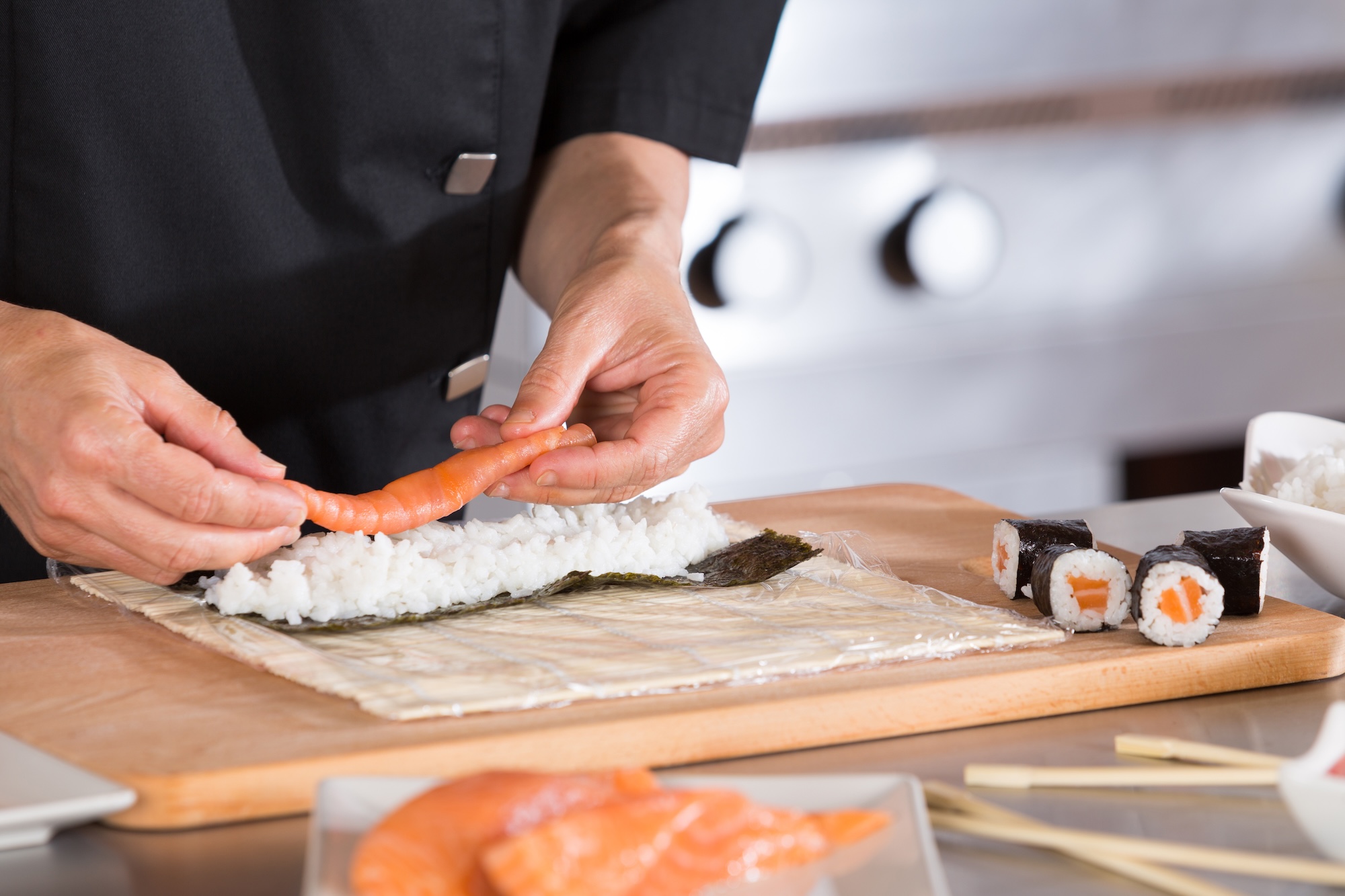
10 Essential Dining Tips for an Unforgettable Experience in Tokyo
February 7, 2025
5 min
Tokyo is a food lover's paradise, offering a rich array of culinary delights ranging from world-class sushi to mouthwatering street food.







